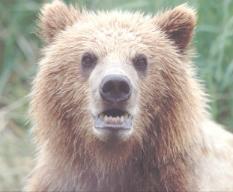Three adults, four pups in pack as they move to lower elevations in the Methow Valley for the third winter.
By Joyce Campbell,
Methow Valley NewsThe Methow Valley’s wolf pack is back from their summer range in the high mountains of the Chelan-Sawtooth Wilderness and Twisp River Valley.
A collaboration of agencies and conservation groups are monitoring the seven-member Lookout Pack by air and by ground using radio telemetry, verified sightings, howling surveys, remote cameras and follow-ups on reports by the public.
The pair of radio-collared wolves is being followed by a sub-adult wolf and four pups, as they inhabit a territory that reaches from the Wilderness to the valley floor. As the snow deepens in the mountains, biologists were expecting the pack to return to lower elevations.
They showed up the first week in November, similar to last year, said John Rohrer, wildlife biologist for the Methow Valley Ranger District. “They made bigger moves until the snow got deeper,” said Rohrer. The pack last year roamed the far reaches of the Twisp River Valley before settling in the Lookout Mountain area in late December.
Just because they did it last year, doesn’t mean they’ll do it this year. The pack has been unpredictable, staying later this year in their winter and denning range, according to Rohrer. “Last year, they moved to the Wilderness a lot earlier,” he said.
“There continue to be sightings all along the Cascades, but nothing documented,” said Andrea Lyons, Forest Service wildlife biologist for the Entiat Ranger District. She said there have been visual sightings, people seeing tracks and scat and hearing howling. The reports are not concentrated in a certain area or time.
Lyons has been tracking the wolf pack from the air all summer, flying every 10 to 14 days. Antennae are attached to both struts on a fixed-wing airplane to get directional signals from the radio-collared adults. The monitoring will shift to more ground telemetry during the winter, said Lyons.
To report wolf sightings call the state wolf reporting hotline at (888) 584-9038.









